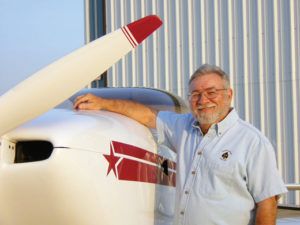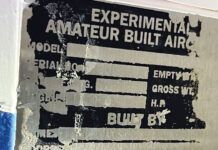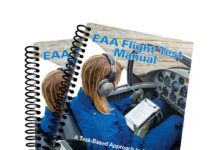
Question: Why should I be bound by someone else’s operating limitations?
Answer: This question needs a little explanation before jumping to the answer. It came up during a discussion on the Vans AirForce web forum. The original question that started the thread was: Do I have to notify the FSDO [Flight Standards District Office] when I incorporate a major change to my Experimental/Amateur-Built aircraft? My answer to that question was yes.
There should be a statement in your operating limitations that requires you to notify the local FSDO for approval of your flight-test area and to determine the length of time needed for testing the new modification. Although the normal flight-testing period for a major change is 5 hours minimum, the FSDO may require additional time depending on the extent of the modification.
Many people don’t realize that the standard operating limitations have changed over time, usually for the better. Before the late 1990s, the owner was required to apply for a recurrent airworthiness inspection any time a modification as described in FAR Part 21.93 was incorporated. That section reads as follows: (a) In addition to changes in type design specified in paragraph (b) of this section, changes in type design are classified as minor and major. A minor change is one that has no appreciable effect on the weight, balance, structural strength, reliability, operational characteristics, or other characteristics affecting the airworthiness of the product. All other changes are major changes (except as provided in paragraph (b) of this section).
In the very late 1990s, operating limitations were revised to allow owners to incorporate a major change and place the aircraft back into Phase I themselves, with no requirement to notify anyone. I was not comfortable with this approach, so I added a statement: Some modifications may be extreme enough to require recertification. Therefore, the local FSDO, MIDO or a DAR should be consulted when a major change is extreme in nature. How did I get away with that? As DARs, we are allowed to add any limitations we feel are necessary.
In early 2003, the standard operating limitations changed again, and a requirement was added that the owner notify the geographically responsible FSDO when a major change is incorporated.
The bottom line is that the operation of each individual aircraft is bound by that aircrafts operating limitations. If you have older operating limitations and would like to have the advantages contained in the new limitations, you may apply to the FAA or a DAR to have your operating limitations updated. If you contact a DAR for this revision, make sure he has Function Code 33, as not all DARs are allowed to do amendments.
Whenever I issue operating limitations, I read them aloud with the owner. I ask if there are any questions about the content or interpretation. This not only confirms understanding, but also checks for mistakes I might have made in typing them.
Please send your questions for DAR Asberry to [email protected] with Ask the DAR in the subject line.













